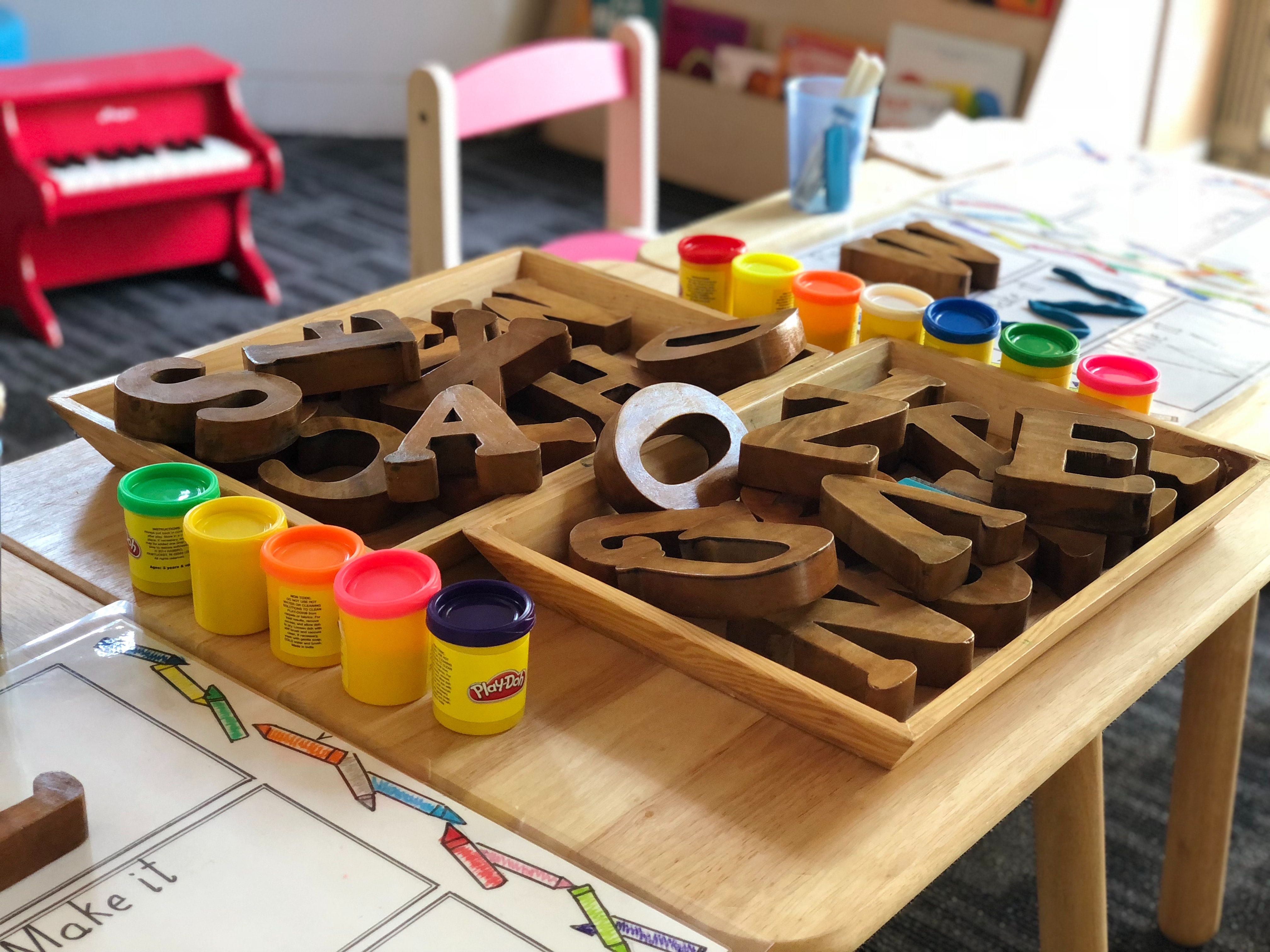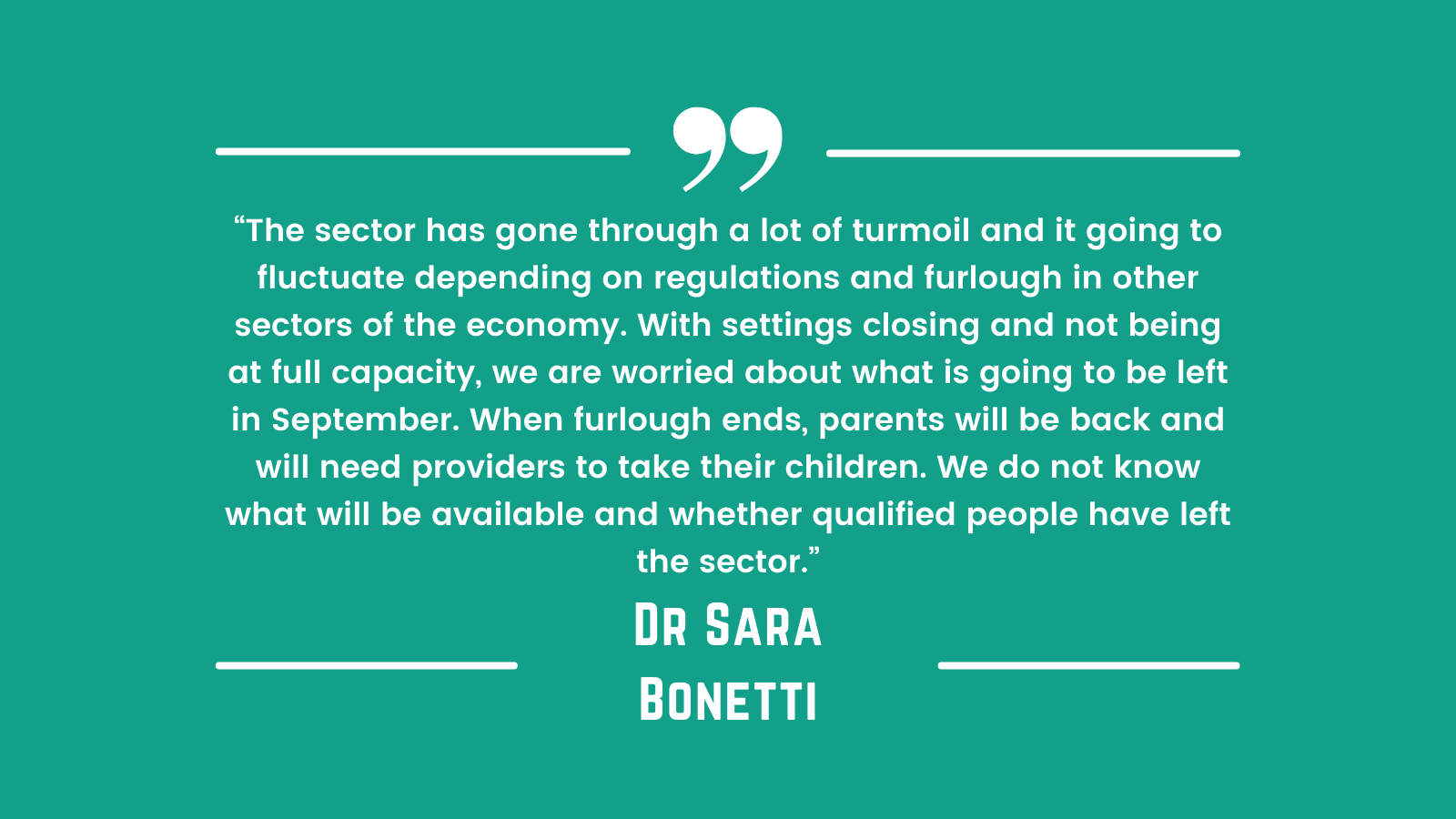"Noone is denying that we need more money but, the mixed market does not help. Some are private providers and they have the goal of making a profit. It is very different for social enterprises. It is always that delicate thing about public money going into private hands. Yet, that is the system that has been chosen."
Dr Sara Bonetti is the Director of Early Years at the Education Policy Institute. Her work focuses on early education, particularly workforce issues. More recently, Sara has been taking a closer look into the funding gap in the sector. We spoke about why there is a lack of incentive for early years professionals to stay in the industry and how the funding system could be reviewed.
Changing funding streams to combat inefficiency
At the moment, early years settings receive money from the government through the early years national funding formula. Local authorities are supposed to pass through the equivalent of 95% of the funding they receive to providers.
Money is set at an hourly rate and designed to cover the cost of looking after an individual child. These costs can vary if a child requires special educational needs. But, overall, the system is something that Sara would like to see adjusted.
Due to the complexity in allocating funding, Sara believes that the answer is not entirely based on more money.
She said: “The big issue is not just the funding per hour, but how the funding is structured. It is extremely inefficient. This is something we are keen to look into more. The fact that there are different funding streams, first of all, makes it confusing to parents. Some funding comes from education, other bits from benefits, universal credit and tax-free childcare.
“If we were able to streamline the current funding streams, we would not necessarily need much more money. A lot of funding is returned or goes unspent so, it is a matter of restructuring. I think the other inefficiency comes from setting an hourly rate. We could make entitlement that is per year, rather than per child per hour. Even if it was the same amount of money, you could plan for the entire year.”

However, even with the aforementioned inefficiencies, Sara believes that the settings should continue to receive funding through public providers. This is instead of settings getting the funding directly from the government.
“I have mixed feelings about this,” says Sara.
“In reality, we have a market where there is competition. I would be okay if annual entitlement was given to providers through public bodies. I do not know if I would want to lose public oversight. Yet, some people will tell you that their local authority is failing so, how can you argue in that case?
“But there are authorities doing an amazing job and go way beyond their duty with less money. I do not think the solution to inefficiency is to scrap the involvement of local authorities. A single setting does not represent the whole area.”
Incentive to stay in the sector
Members of the sector have emphasised the level of skill required to deliver successful early education. The challenge is to attract highly qualified staff and to have a profession that provides a substantial wage.
Sara sees workforce retention as something that needs revaluating. She believes that staff are not paid enough and the level of pay is not reflective of the work required to be an early year professional.
She said: “There are multiple elements at play. On one side, there is the issue of low pay, especially relating to the responsibility of caring for a child. Something to make clear is that managers of settings want to pay their staff a higher wage. But, it is a case of they cannot afford to pay them a higher salary.
“Another challenge is that we have a mixed market system. So private, voluntary independent sectors and childminders alongside maintained or school-based providers. In the school-based settings, there is higher pay and more security. So the problem is double. In general, low pay, and those who want to upskill exit the voluntary sector and work in a school-based provider.”

The impact of Covid on reception and development
Once a child reaches the compulsory school age of five, they should go into reception class. This is still part of the early years.
Covid-19 has impacted the reception years because of staff and children isolating. Children not attending school has reached highs of over one million and remains a concern.
Some children, due to setting closures, have missed time with their provider before they transition into reception. The disruption caused by the pandemic might have future implications, believes Sara.
She said: “Children in reception missed out on several weeks and months of early education. The education of these children has been disrupted. We really want to see the impact on language and communication skills.”
Children develop spending time in the class and through socialising. Young children could have missed important stages in their development. Sara thinks that assessing the effects of not socialising is research worth exploring.
She said: “Experts agree that for reception children, it is not just about taking them out of the classroom for one-to-one support. It is about giving them more opportunities to develop their skills through a regular socialisation process. We have to see how it goes for the rest of the year.
“Testing and assessments are very different for the early years. It is hard to quantify missed learning. It is something that we need to monitor. The general agreement is that the social and emotional aspects of development are key things to keep an eye on.”

Responsibility for bridging the gap between early years and school education
Altering the perception of the early years is a task that nursery owners and academics are trying to achieve for the sector. Raising awareness is one of the ways this can be attained. The aim is to highlight why the early years is not dissimilar from reception. The importance of cognitive and emotional development should be recognised in pre-school providers, alongside school settings.
To bridge the gap, we “all need to take responsibility,” says Sara. This includes early educators, parents and the government. If every individual contributes just a small part, it could make a difference.
“The responsibility lies with everybody so that early years is more acceptable to talk about at national level. People can then be responsible for raising the profile of the sector in their own way. Whether you are a professional in early childhood or a policymaker, we need to create a closer link with the education system."
A possible solution to address the disconnect is to emphasise the role of an early childhood professional in a reception setting. Sara says this should be an effective way of helping children transition to school.
“I would like headteachers to be supported, but not required, to gain some child development knowledge. This is so they can implement appropriate early education in their schools. Or, they have enough skills to hire and give decision-making power to an early years specialist.”
Disclaimer: Views of Dr Sara Bonetti in this piece are her own and not on behalf of her organisation.
📧 Want to stay in the loop of all things early years? Subscribe to my newsletter

Featured image source: Pixabay